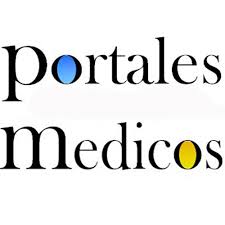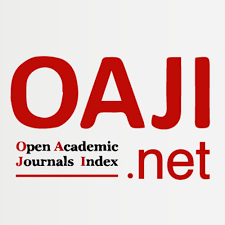¿La senescencia celular promueve el envejecimiento biológico? Scoping review
Resumen
La senescencia celular es un mecanismo de respuesta frente a elementos nocivos, consiste en la detención de las divisiones celulares; por lo cual la célula permanece viable y el daño sufrido no es transmisible a las siguientes generaciones; sin embargo, la evidencia actual indica que este tipo de células son más predominantes en tejidos de individuos con mayor edad biológica y la presencia de ciertos marcadores que expresan daño molecular plantea como objetivo contestar la siguiente pregunta de investigación: ¿la senescencia celular promueve el envejecimiento biológico? Se llevó a cabo una revisión de alcance “Scoping review” con base a la guía de extensión de la declaración PRISMA y con las pautas del Instituto Joanna Briggs para la realización revisiones sistemáticas de alcance, empleando las bases de datos PubMed, Scopus y Google Scholar, se seleccionaron los artículos publicados en los últimos 5 años, En los criterios de inclusión, se aceptaron todos los tipos de estudios posibles publicados en el idioma inglés con fechas entre el 30 noviembre de 2019 hasta el 01 de enero de 2021, la búsqueda arrojó 579 artículos, que luego de su respectiva revisión fueron seleccionados 52. De estos artículos seleccionados (42) se identificaron como estudios documentales de los cuales (40) eran artículos de revisión y (2) emplearon bases de datos provenientes de estudios previos; (11) eran estudios experimentales de los cuales (5) eran estudios in vivo y (6) in vitro. Debido a los múltiples factores celulares y bioquímicos involucrados, se requiere de más datos para inferir una asociación directa de causalidad del envejecimiento sobre los tejidos.
Recibido: 16/02/2021
Aprobado: 25/03/2021
Palabras clave
Texto completo:
PDFReferencias
Gerasymchuk M, Cherkasova V, Kovalchuk O, Kovalchuk I. The role of micrornas in organismal and skin aging. Int J Mol Sci. 2020;21(15):1–36.
Idda ML, Mcclusky WG, Lodde V, Munk R, Abdelmohsen K, Rossi M, et al. Senescence Human Tissue. 2020;12(5):4052–66.
Zampino M, Ferrucci L, Semba RD. Biomarkers in the path from cellular senescence to frailty. Exp Gerontol [Internet]. 2020;129:110750. Available from: https://doi.org/10.1016/j.exger.2019.110750
Gu Y, Han J, Jiang C, Zhang Y. Biomarkers, oxidative stress and autophagy in skin aging. Ageing Res Rev [Internet]. 2020;59(February):101036. Available from: https://doi.org/10.1016/j.arr.2020.101036
Mohamad Kamal NS, Safuan S, Shamsuddin S, Foroozandeh P. Aging of the cells: Insight into cellular senescence and detection Methods. Eur J Cell Biol [Internet]. 2020;99(6):151108. Available from: https://doi.org/10.1016/j.ejcb.2020.151108
Schafer MJ, Zhang X, Kumar A, Atkinson EJ, Zhu Y, Jachim S, et al. The senescence-associated secretome as an indicator of age and medical risk. JCI Insight. 2020;5(12):1–12.
Li T, Luo Z, Lin S, Li C, Dai S, Wang H, et al. MiR-185 targets POT1 to induce telomere dysfunction and cellular senescence. Aging (Albany NY). 2020;12(14):14791–807.
Esteves KC, Jones CW, Wade M, Callerame K, Smith AK, Theall KP, et al. Adverse childhood experiences: Implications for offspring telomere length and psychopathology. Am J Psychiatry. 2020;177(1):47–57.
Alibhai FJ, Lim F, Yeganeh A, DiStefano P V., Binesh-Marvasti T, Belfiore A, et al. Cellular senescence contributes to age-dependent changes in circulating extracellular vesicle cargo and function. Aging Cell. 2020;19(3):1–14.
Lulkiewicz M, Bajsert J, Kopczynski P, Barczak W, Rubis B. Telomere length: how the length makes a difference. Mol Biol Rep [Internet]. 2020;47(9):7181–8. Available from: https://doi.org/10.1007/s11033-020-05551-y
Kudryashova KS, Burka K, Kulaga AY, Vorobyeva NS, Kennedy BK. Aging Biomarkers: From Functional Tests to Multi-Omics Approaches [Internet]. Vol. 20, Proteomics. 2020. p. 1900408. Available from: https://onlinelibrary.wiley.com/doi/abs/10.1002/pmic.201900408
Thoppil H, Riabowol K. Senolytics: A Translational Bridge Between Cellular Senescence and Organismal Aging. Front Cell Dev Biol. 2020;7(January):1–7.
Hernández R, Fernández C, Baptista P, Hernandez Sampieri R, Fernandez Collado C, Baptista Lucio M del P. Definición del tipo de investigación a realizar: bàsicamente exploratoria, descriptiva, correlacional o explicativa [Internet]. Metodología de la investigación. 1991. 57–73 p. Available from: http://www.casadellibro.com/libro-metodologia-de-la-investigacion-5-ed-incluye-cd-rom/9786071502919/1960006%5Cnhttp://sapp.uv.mx/univirtual/especialidadesmedicas/mi2/modulo1/docs/Met_Invest_a.pdf
Tricco AC, Lillie E, Zarin W, O’Brien KK, Colquhoun H, Levac D, et al. PRISMA Extension for Scoping Reviews (PRISMA-ScR): Checklist and Explanation. Ann Intern Med [Internet]. 2018 Oct 2;169(7):467–73. Available from: http://www.elsevier.com/locate/scp
Peters M, C G, P M, Z M, AC T, Khalil H. 2017 Guidance for the Conduct of JBI Scoping Reviews Chapter 11 : Scoping Reviews Scoping Reviews. Underst scoping Rev Defin Purp Process. 2017;(September).
Rentscher KE, Carroll JE, Cole SW, Repetti RL, Robles TF. Relationship closeness buffers the effects of perceived stress on transcriptomic indicators of cellular stress and biological aging marker p16INK4a. Aging (Albany NY). 2020;12(16):16476–90.
Chu X, Wen J, Raju RP. Rapid senescence-like response after acute injury. Aging Cell. 2020;19(9):1–5.
Lee S, Persson P, Mathews RD. Early signs of gut microbiome aging: biomarkers of inflammation, metabolism, and macromolecular damage in young adulthood. Rev Financ Stud. 2015;29(9):2341–86.
Tuttle CSL, Waaijer MEC, Slee-Valentijn MS, Stijnen T, Westendorp R, Maier AB. Cellular senescence and chronological age in various human tissues: A systematic review and meta-analysis. Aging Cell. 2020;19(2):1–11.
Von Zglinicki T, Wan T, Miwa S. Senescence in Post-Mitotic Cells: A Driver of Aging? Antioxidants Redox Signal. 2021;34(4):308–23.
Amaya-Montoya M, Pérez-Londoño A, Guatibonza-García V, Vargas-Villanueva A, Mendivil CO. Cellular Senescence as a Therapeutic Target for Age-Related Diseases: A Review. Adv Ther. 2020;37(4):1407–24.
Dhalla PS, Kaul A, Garcia J, Bapatla A, Khalid R, Armenta-Quiroga AS, et al. Comparing the Role of the p53 Gene and Telomerase Enzyme in ‘Accelerated Aging Due to Cancer’: A Literature Review. Cureus. 2020;12(10):1–11.
Tabibzadeh S. Cell-centric hypotheses of aging. Vol. 26, Frontiers in Bioscience. 2021. p. 1–49.
Salminen A. Activation of immunosuppressive network in the aging process. Ageing Res Rev [Internet]. 2020;57:100998. Available from: https://doi.org/10.1016/j.arr.2019.100998
Thomas R, Wang W, Su DM. Contributions of Age-Related Thymic Involution to Immunosenescence and Inflammaging. Immun Ageing. 2020;17(1):1–17.
Bhatia-Dey N, Kanherkar RR, Stair SE, Makarev EO, Csoka AB. Cellular senescence as the causal nexus of aging. Front Genet. 2016;7(FEB):1–14.
Panczyszyn A, Boniewska-Bernacka E, Goc A. The role of telomeres and telomerase in the senescence of postmitotic cells. DNA Repair (Amst). 2020;95(August):1–7.
Mijit M, Caracciolo V, Melillo A, Amicarelli F, Giordano A. Role of p53 in the regulation of cellular senescence. Biomolecules. 2020;10(3):1–16.
de Magalhães JP, Passos JF. Stress, cell senescence and organismal ageing. Mech Ageing Dev [Internet]. 2018;170(July 2017):2–9. Available from: https://doi.org/10.1016/j.mad.2017.07.001
Rajendran P, Alzahrani AM, Hanieh HN, Kumar SA, Ben Ammar R, Rengarajan T, et al. Autophagy and senescence: A new insight in selected human diseases. J Cell Physiol. 2019;234(12):21485–92.
Barbé-Tuana F, Funchal G, Schmitz CRR, Maurmann RM, Bauer ME. The interplay between immunosenescence and age-related diseases. Semin Immunopathol. 2020;
Shmulevich R, Krizhanovsky V. Cell Senescence, DNA Damage, and Metabolism. Vol. 34, Antioxidants and Redox Signaling. 2021. 324–334 p.
Da Silva PFL, Schumacher B. DNA damage responses in ageing. Open Biol. 2019;9(11).
Xu W, Wong G, Hwang YY, Larbi A. The untwining of immunosenescence and aging. Semin Immunopathol. 2020;559–72.
Beck J, Horikawa I, Harris C. Cellular Senescence: Mechanisms, Morphology, and Mouse Models. Vet Pathol. 2020;
Kale A, Sharma A, Stolzing A, Stolzing A, Desprez PY, Desprez PY, et al. Role of immune cells in the removal of deleterious senescent cells. Immun Ageing. 2020;17(1):1–9.
Fulop T. Immunosenescence is both functional / adaptive and dysfunctional / maladaptive. 2020;
Rudzinska M, Parodi A, Balakireva A V., Chepikova OE, Venanzi FM, Zamyatnin AA. Cellular aging characteristics and their association with age-related disorders. Antioxidants. 2020;9(2):1–18.
von Kobbe C. Targeting senescent cells: Approaches, opportunities, challenges. Aging (Albany NY). 2019;11(24):12844–61.
Stroik S, Hendrickson EA. Telomere replication—When the going gets tough. DNA Repair (Amst). 2020;94.
Uyar B, Palmer D, Kowald A, Escobar HM, Barrantes I, Möller S, et al. Single-cell analyses of aging, inflammation and senescence. Ageing Res Rev. 2020;(January):101156.
Saleh T, Bloukh S, Carpenter VJ, Alwohoush E, Bakeer J, Darwish S, et al. Therapy-induced senescence: an “old” friend becomes the enemy. Cancers (Basel). 2020;12(4):1–38.
Vecoli C, Borghini A, Andreassi MG. The molecular biomarkers of vascular aging and atherosclerosis: telomere length and mitochondrial DNA4977 common deletion. Mutat Res - Rev Mutat Res [Internet]. 2020;784:108309. Available from: https://doi.org/10.1016/j.mrrev.2020.108309
Sacco A, Belloni L, Latella L. From Development to Aging: The Path to Cellular Senescence. Antioxidants Redox Signal. 2021;34(4):294–307.
Di Micco R, Krizhanovsky V, Baker D, d’Adda di Fagagna F. Cellular senescence in ageing: from mechanisms to therapeutic opportunities. Nat Rev Mol Cell Biol. 2020;
Chatsirisupachai K, Palmer D, Ferreira S, de Magalhães JP. A human tissue-specific transcriptomic analysis reveals a complex relationship between aging, cancer, and cellular senescence. Aging Cell. 2019;18(6):1–5.
Iglesias J, Comai L. Measurements of Hydrogen Peroxide and Oxidative DNA Damage in a Cell Model of Premature Aging. Aging Methods Protoc Methods Mol Biol. 2020;2144:245.
Basisty N, Kale A, Jeon OH, Kuehnemann C, Payne T, Rao C, et al. A Proteomic Atlas of Senescence-Associated Secretomes for Aging Biomarker Development. bioRxiv. 2019;1–26.
Ogrodnik M, Salmonowicz H, Gladyshev VN. Integrating cellular senescence with the concept of damage accumulation in aging: Relevance for clearance of senescent cells. Aging Cell. 2019;18(1):1–21.
Bonafè M, Sabbatinelli J, Olivieri F. Exploiting the telomere machinery to put the brakes on inflamm-aging. Ageing Res Rev [Internet]. 2020;59:101027. Available from: https://doi.org/10.1016/j.arr.2020.101027
Razgonova MP, Zakharenko AM, Golokhvast KS, Thanasoula M, Sarandi E, Nikolouzakis K, et al. Telomerase and telomeres in aging theory and chronographic aging theory (Review). Mol Med Rep. 2020;22(3):1679–94.
Souliotis VL, Vlachogiannis NI, Pappa M, Argyriou A, Ntouros PA, Sfikakis PP. DNA damage response and oxidative stress in systemic autoimmunity. Int J Mol Sci. 2020;21(1):1–24.
Prieto LI, Graves SI, Baker DJ. Insights from In Vivo Studies of Cellular Senescence. Cells. 2020;9(4):1–13.
Song S, Lam EWF, Tchkonia T, Kirkland JL, Sun Y. Senescent Cells: Emerging Targets for Human Aging and Age-Related Diseases. Trends Biochem Sci [Internet]. 2020;45(7):578–92. Available from: https://doi.org/10.1016/j.tibs.2020.03.008
Attaallah A, Lenzi M, Marchionni S, Bincoletto G, Cocchi V, Croco E, et al. A pro longevity role for cellular senescence. GeroScience. 2020;42(3):867–79.
DOI: https://www.doi.org/10.53766/AcBio/Se encuentra actualmente indizada en: | |||
 |  |  | |
  |  |  |  |
 |  |  |  |
 |  |  | |
![]()
Todos los documentos publicados en esta revista se distribuyen bajo una
Licencia Creative Commons Atribución -No Comercial- Compartir Igual 4.0 Internacional.
Por lo que el envío, procesamiento y publicación de artículos en la revista es totalmente gratuito.




